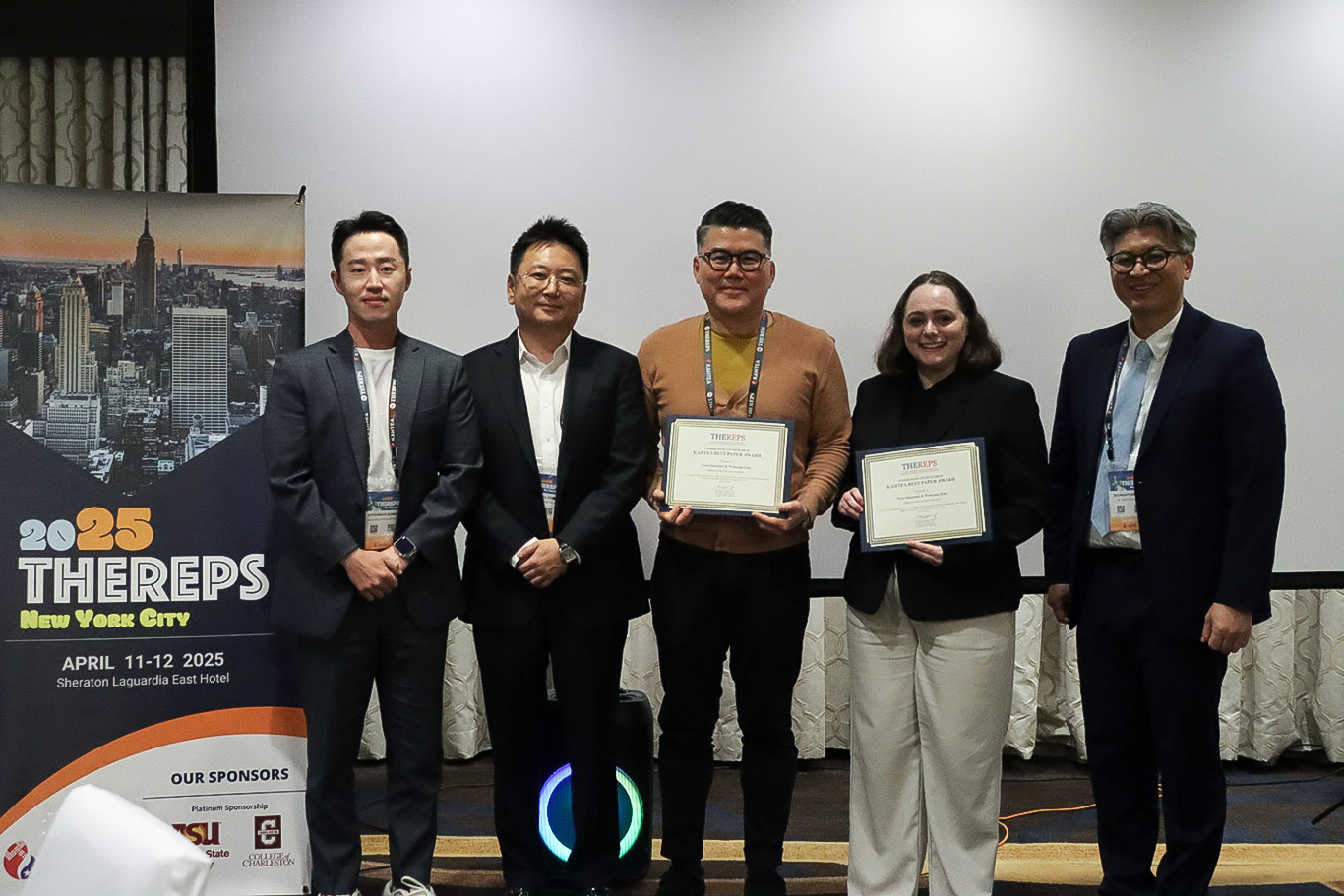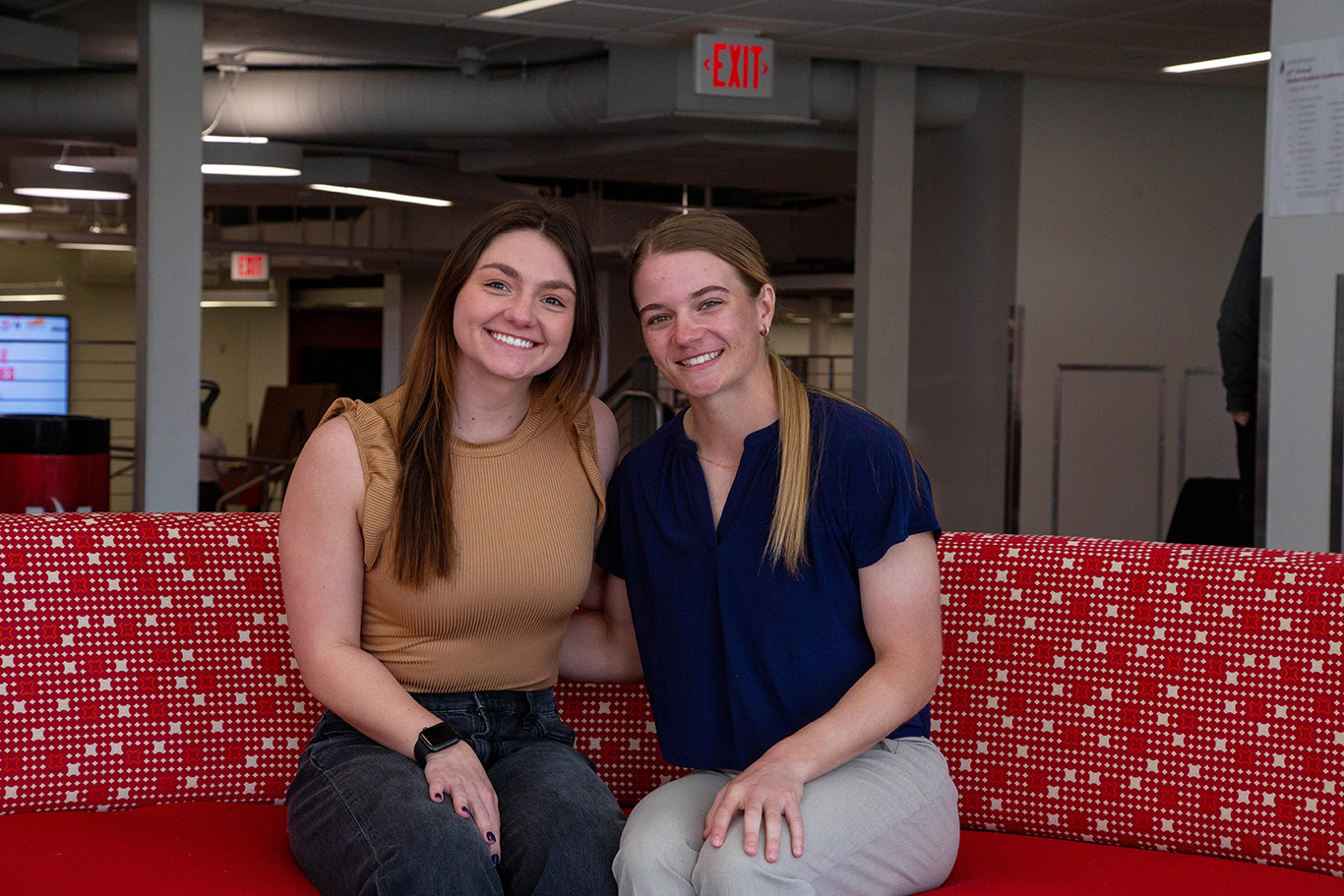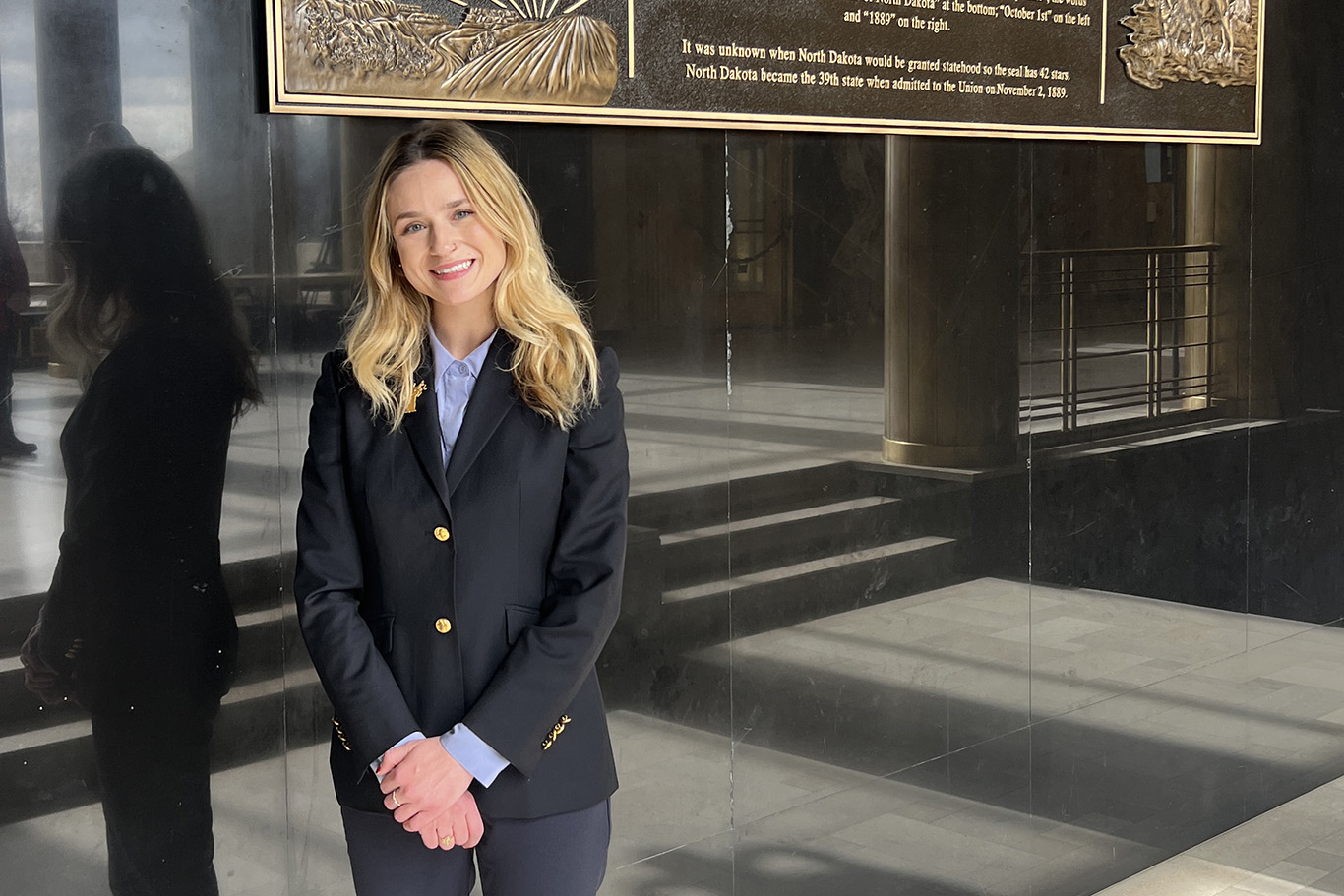Student Team Bridges Age Gaps to Advance AI in Healthcare
Minnesota State University Moorhead prides itself on the variety and effectiveness of student internship experiences. Avery Steffen, an undergraduate student studying healthcare management & leadership and leadership and innovation in aging studies, sees her internship as an impactful experience that will propel her career opportunities.
"It's great experience for someone young like me to have on their resume; it's something that will stand out when I'm looking for jobs," Avery says.
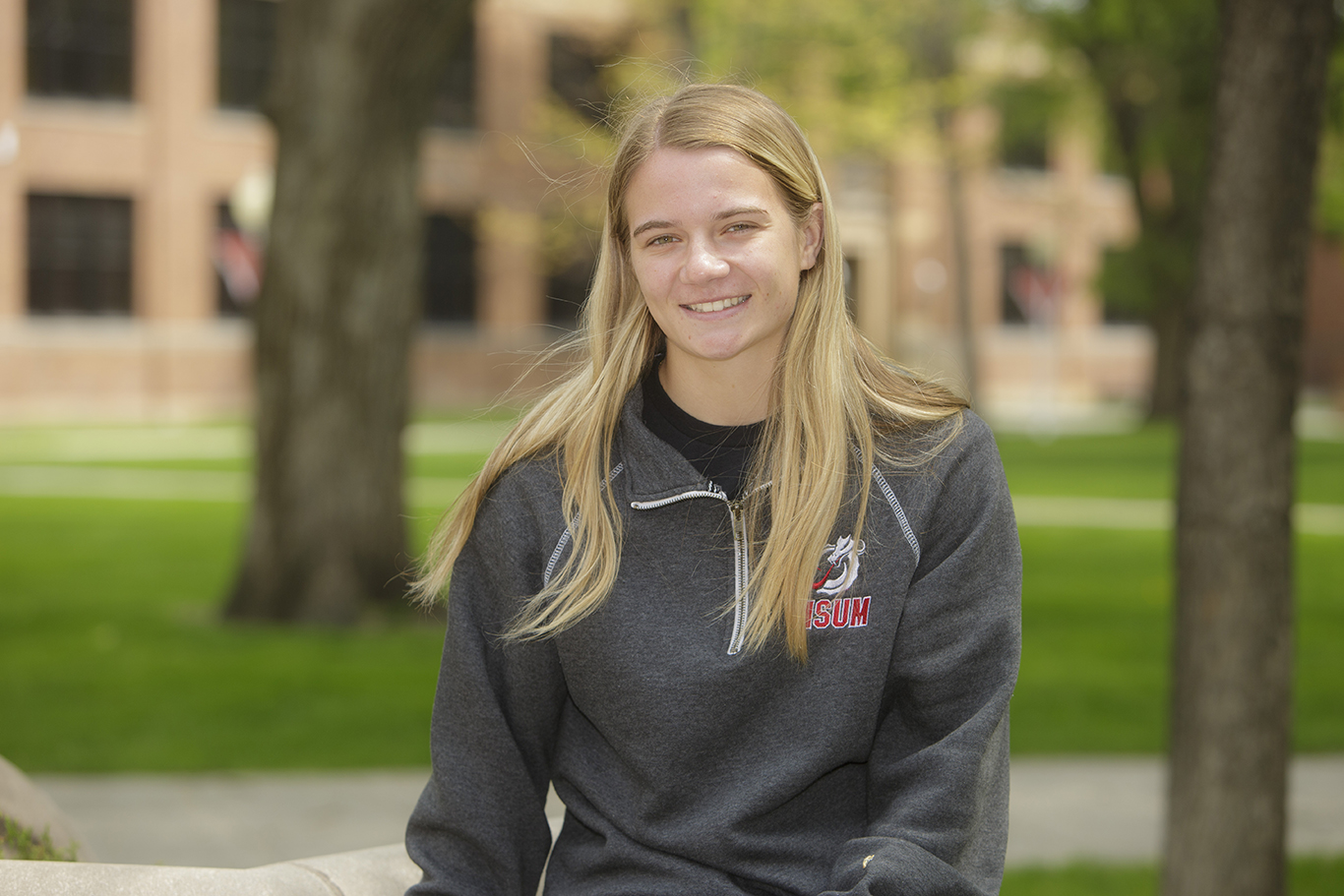
Avery Steffen, Undergraduate
The internship was a unique collaborative opportunity between a Moorhead High School student, an undergraduate student, and two graduate students to conduct research together in the healthcare field. One of the graduate students, Jennifer Yednock, who is pursuing a master's degree in healthcare administration from MSUM, says the internship inspired a passion for research.
"I realized I really enjoyed it. I'm figuring out how to integrate research into my career," Jennifer says.
For Casey Larson, who is also pursuing her master's in healthcare administration at MSUM, it was a step outside her comfort zone, one that grew her personally and professionally, along with giving her relevant career experience.
"Learning the research process and feeling more comfortable interviewing people was a major takeaway for me," Casey says.
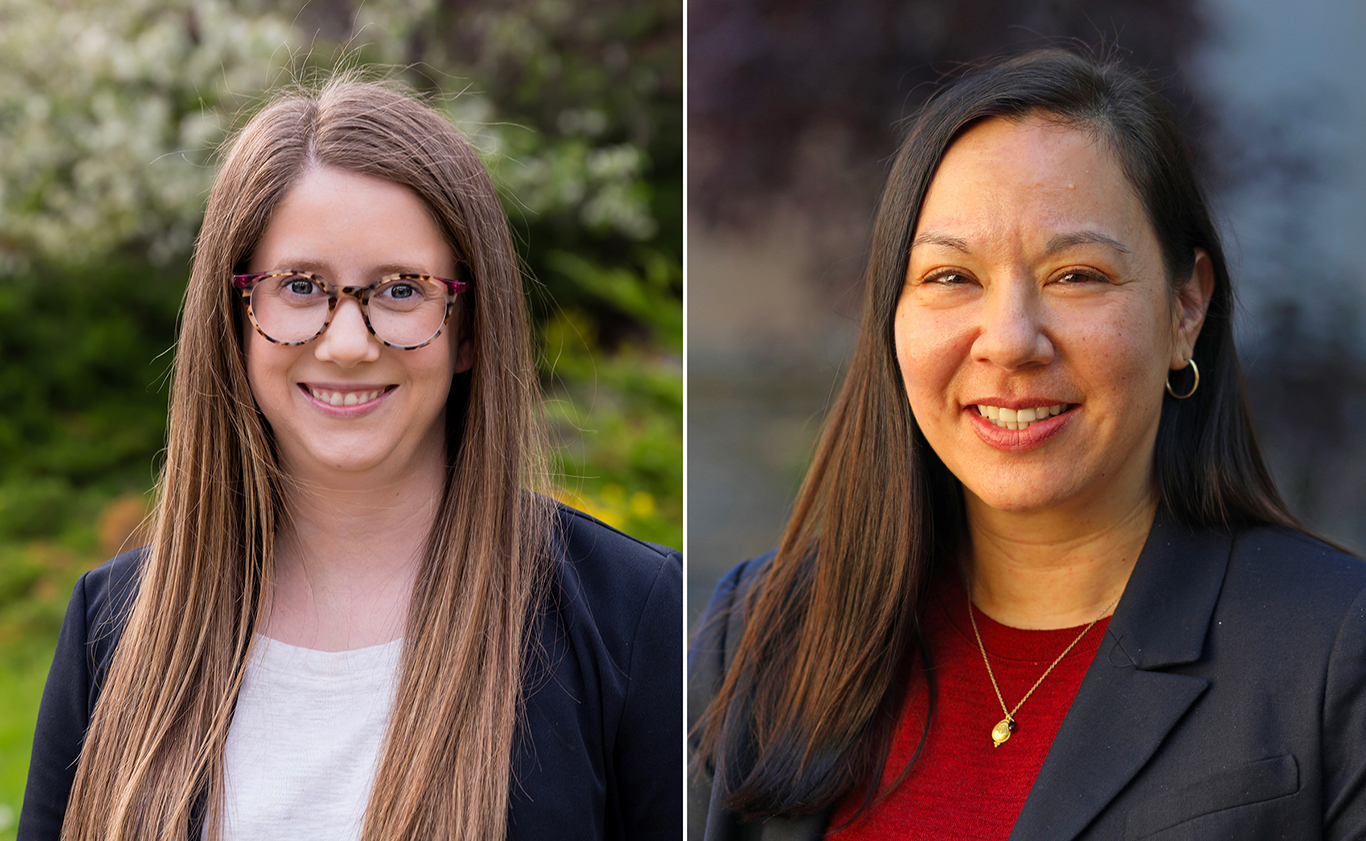
Casey Larson, Jennifer Yednock, Graduate
This research experience was conducted under the mentorship of Dr. Jitendra Singh, co-chair of the School of Nursing and Healthcare Leadership and professor and program coordinator for Healthcare Management & Leadership and Leadership and Innovation in Aging Studies, and Dr. Brandi Sillerud, professor and program coordinator for the Master of Healthcare Administration. Singh and Sillerud have spent years conducting research to break down the barriers that exist to implementing artificial intelligence (AI) in healthcare.
Most recently, their research has shifted to understanding healthcare leaders' perceptions of AI in the workplace. The end goal is to use all of their data to help leaders successfully implement it in their communities.
"We ultimately want to use all of our data to help form a plan for healthcare leaders to implement AI and circumvent the barriers," Sillerud says.
The group conducted 24 interviews with healthcare leaders in the Fargo-Moorhead area in the spring of 2024, hoping to publish a research paper with the results. In conjunction with the research, Avery and 9th-grade Moorhead High School student Advitya Singh presented the group's findings with Singh.
This qualitative study was conducted with leaders from a variety of healthcare sectors, including academic medical centers, hospitals, skilled nursing centers, assisted living facilities, hospice care centers, and healthcare consulting. While the results aren't officially published, here are some of the trends the research team has seen so far:
Need for regulations surrounding AI usage in healthcare.
As AI and Health IT (in general) continue to evolve, there is an increased need for regulations and laws to protect sensitive information and safeguard patient privacy. This is especially true in healthcare and was a very present concern among the interviewees.
There is a lack of knowledge about AI in healthcare.
While AI is groundbreaking for the healthcare industry, there is a predicament with implementing AI where it is most needed. Smaller clinics and facilities in rural areas that are understaffed stand to gain the most from AI, but since workers already have high workloads, finding the time for them to be educated on how to use AI tools is a tall task.
Healthcare leaders need support in the process of implementing AI.
Most healthcare leaders need access to support or frameworks for effectively integrating AI into their day-to-day processes. Both clinical and non-clinical workers need to see how AI will benefit them in the long run (what is in it for them). Creating tension for change, celebrating small wins, and a strategic management approach may help in building buy in from employees at all levels.
For Avery, this opportunity, and mentorship from Dr. Singh, has boosted her confidence in her abilities. "I never really thought that I would be able to do research like this. Dr. Singh is a great mentor, and I've learned a lot from him and the research process," she says.
Jennifer had similar praise for the professors in the graduate program, including Singh and Sillerud. "All of the professors are incredibly responsive and understanding, considering most of us are working full-time as well as taking classes," she said.
This research study and Avery's experience as a student-athlete playing softball at MSUM has given her the skills and leadership experience she needs to pursue the career she's always wanted.
"I've been looking into being a nursing home administrator, and with that, I need a lot of leadership qualities. My experience at MSUM with teammates and coaches, along with faculty and leading this research study, has taught me leadership qualities I never would have had apart from those experiences," she said.
For Avery, Casey, Jennifer, and Advitya, this research opportunity and mentorship experience have helped them expand their skill set and grow in their personal lives. Whether it was gaining confidence and growing in leadership, stepping outside of their comfort zone, or discovering a passion for research, this experience will continue to impact them for the rest of their lives, as they positively influence healthcare for the betterment of all.
"I coached the students to begin with, but now they are flying on their own," Singh says.
School of Nursing and Healthcare Leadership
The Minnesota State University Moorhead School of Nursing and Healthcare Leadership (SNHL) prepares undergraduate and graduate students in nursing and/or healthcare administration for life-long learning, caring service, leadership, and global citizenship.
Learn more
